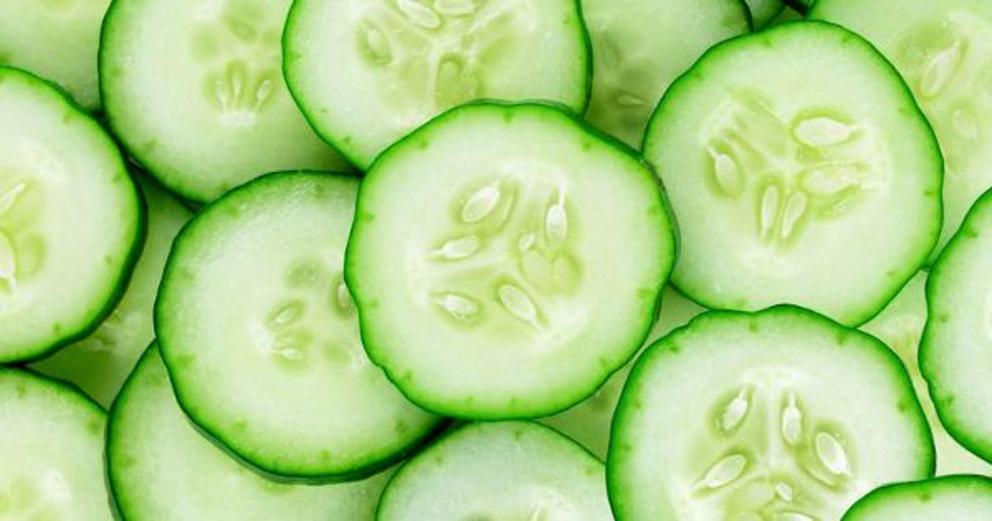
Top four health benefits of cucumbers
Written By: [url=https://greenmedinfo.com/gmi-blogs/gmi research group]GreenMedInfo Research Group[/url]
Cucumbers offer not only a good crunch and cooling hydration. They also pack a nutritional punch and offer wonderful benefits against several prevalent disorders
Cucumber may not be as exciting or awe-inducing as other items on the health savvy's checklist. Yet it's more than just a cooling cruncher -- and is actually a superfood in its own right.
A 142-gram (g) (about 0.6 cups) serving of chopped, unpeeled, raw cucumber offers 10.2 micrograms (mcg) of vitamin K. The same amount of cucumbers also provide 19.9 milligrams (mg) of calcium. Vitamin K assists in calcium absorption, and together they can help optimize bone health.
A one-half cup serving of cucumber slices also supplies 2% of your magnesium and potassium needs every day.[ii] Let's dive deeper into the benefits of cucumber.
1. Osteoarthritis
Osteoarthritis (OA) is an age-related condition caused by wear and tear to the joints. There is currently no known cure for it, but managing it conventionally often entails using high doses of painkillers and anti-inflammatories that have a number of side effects and dependency risks.[iii]
Cucumis sativus extract from cucumbers has been found to work even better than glucosamine-chondroitin in managing OA. A 2017 study involving 122 patients diagnosed with moderate knee osteoarthritis divided the subjects into two groups: those who orally received glucosamine-chondroitin twice every day and those who orally received the cucumber extract twice daily.
The cucumber extract group score on the osteoarthritis index dropped by 22.44% on day 30 and 70.29% by day 180, compared to a 14.8% and 32.81% decrease in the glucosamine-chondroitin group on the same days.[iv] The researchers recorded similar trends for all other pain scores.
According to the study, cucumber was "effective in reducing pain related to moderate knee OA and can be potentially used in the management of knee pain, stiffness and physical functions related to OA."
2. Balanced Cholesterol
Cucumber seed has traditionally been used as a lipid-lowering supplement and has been found to be effective in a study on adult patients with mild cases of hyperlipidemia, a high level of cholesterol, triglycerides or both.[v]
In the randomized trial, the patients were assigned to take either cucumber or placebo capsule once every day with food for six weeks. Their body mass index (BMI), fasting levels of total cholesterol, triglycerides, LDL cholesterol and HDL cholesterol were then measured at different points in time.
The conclusion: consuming cucumber seed extract at a 500-mg daily dose led to positive effects on serum lipid profile in the adult patients, therefore providing a sound option for improving dyslipidemia.
3. Diabetes Complications
Cucumber is an ideal candidate for controlling glucose levels and reducing diabetes-related complications.
In a study published in 2016, researchers investigated the protective effects of cucumber in oxidative and carbonyl stress, which have essential roles in the development of diabetes and its nasty complications as they increase free radical production and impair antioxidant defense in the body.[vi]
In the animal model used, extracts of cucumber were able to prevent oxidative stress and carbonyl stress. They were deemed "a safe and suitable candidate" to reduce these stress models typically observed in cases of diabetes.
4. Stroke
A Dutch study found that white fruits and vegetables may lower stroke risk.[vii] Cucumbers were considered a white fruit due to their white flesh interior. According to previous studies, high consumption of fruits and vegetables generally decreased the risk, but this was the first time that vegetable color was assessed in relation to stroke risk.
In the study, the effect of eating white fruits or veggies was dose-dependent, meaning the more people consumed them, the lower their risk. Each 25 g per day increase, for instance, was linked to a 9% lower risk of stroke.
The white group, of which 55% were apples and pears, included bananas, cauliflower, chicory and the mighty cucumber.
For full references please use source link below.
THANKS TO: https://nexusnewsfeed.com/article/food-cooking/top-four-health-benefits-of-cucumbers






 Sat Mar 23, 2024 11:33 pm by globalturbo
Sat Mar 23, 2024 11:33 pm by globalturbo

